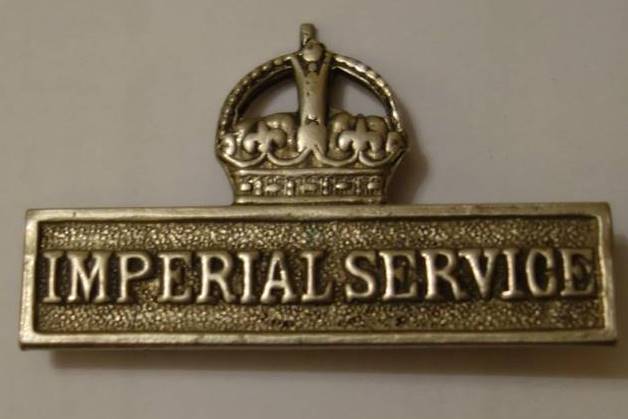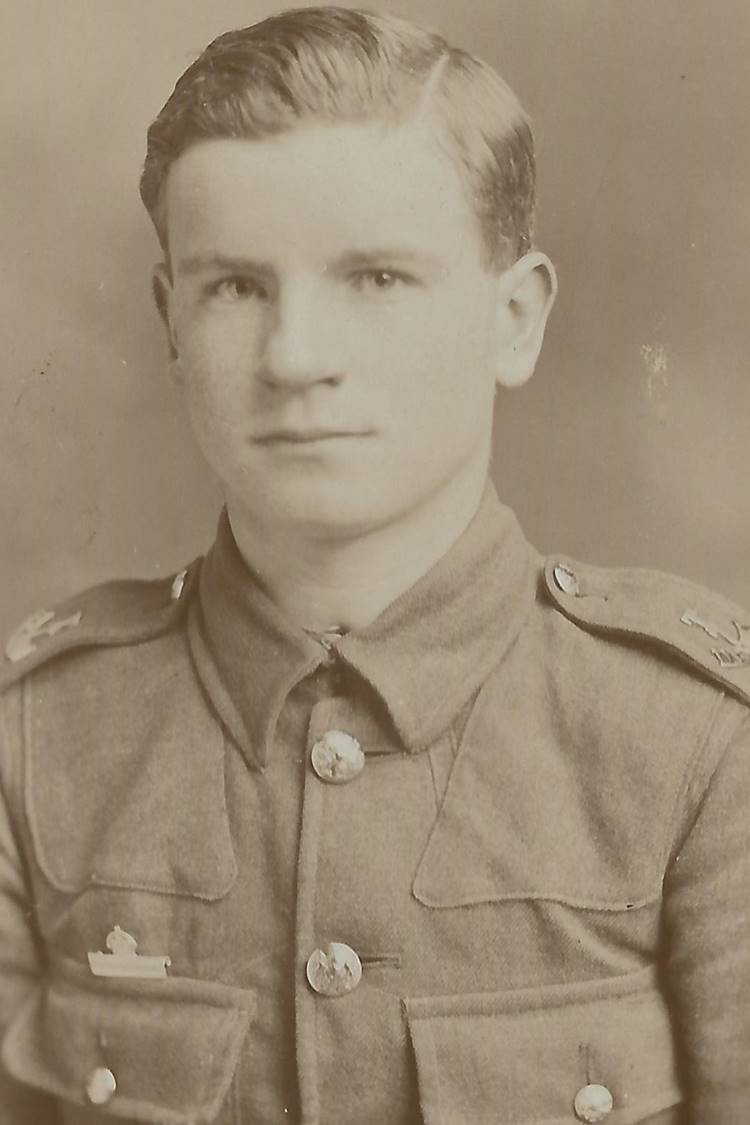This article is about the Territorial Force Imperial Service Badge and will explain what the badge was and how it can help you to research a soldier who served in the First World War. This article is one of a series of guides I have written to help you research a soldier who served in the British Army during the war:
The Territorial Force Imperial Service Badge
In 1907, the Territorial Force was created from the Yeomanry and Volunteer Force. The forerunner of the Territorial Army, the Territorial Force was a reserve whereby a man trained part-time at their local drill hall and attended an annual summer camp. The Territorial Force was designed for Home Service only, while an expeditionary force consisting of regulars was sent overseas. Many men only joined the Territorial Force due to the provision that they couldn’t be forced to serve abroad unless they had signed the Imperial Service Obligation. If they had signed this document, then they would be entitled to wear the Imperial Service Badge. The Imperial Service Badge, or tablet, was introduced by Army Order 3 of 1910:
Imperial Service Badge. 1. His Majesty the King has been graciously pleased to approve of (a) – A badge being worn on the right breast of officers and men of the Territorial Force when in uniform who take the liability to serve outside the United Kingdom in time of national emergency… [2] (b) Each Territorial Force Unit, 90 percent of whose serving members are under such liability, having that fact recorded in a suitable manner under its title in the Army List.
2. The badge will be a metal tablet, 1 5/8 inch [41 mm] by two-fifths inch [10 mm], bearing the words, ”Imperial Service” in raised letters, and surmounted by a crown three-fifth inch high.
By September 1913, only 7% of the Territorial Force had signed the Imperial Service Obligation. Below is a transcription of the obligation from September 1914 which survived in Private Bullen’s service record. Imperial Service Obligations are often found in territorials’ service records, even long after legislation had come into effect which made service abroad compulsory. Many soldiers who hadn’t signed pre-war did so once news began to filter home of Allied reverses on the Western Front. As well as being signed by the soldier in question, the form was signed by the commanding officer of the unit, with the date and station recorded. The station can be very useful in placing a unit as there is often a dearth of information for those serving in Britain.
I (No.) 2566. (Rank) Pte. (Name) F. Bullen of the (Unit) 5th Norfolk Regiment do hereby agree, subject to the conditions stated overleaf, to accept liability, in the event of national emergency, to serve in any place outside the United Kingdom, in accordance with the provisions of Section XIII. (2) (a) of the Territorial and Reserve Forces Act, 1907.
Even after they had signed, a soldier could only serve abroad with either his own unit or part of it e.g. a territorial company sent to reinforce a battalion serving overseas, unless he volunteered to serve with another unit. This continued until Army Order 204 of 1916 allowed the compulsory transfer of soldiers of the Territorial Force. Once war broke out, the Imperial Service Badge brought with it additional benefits as the Derbyshire Courier reported in its 6 October 1914 edition:
Last week-end about 360 of our Battalion had leave to go to their homes. It was quite like a Battalion parade… They came back with great stories of the scenes at Nottingham particularly. There, they tell us, a Territorial had only to step on to the platform to be embraced by dozens of Nottingham girls- that is, if the ”Terrier” was wearing an Imperial Service Badge. If not, it was a case of cold shoulder. So there’s the tip for the boys who want peace and quietness. No badge, no embraces.
The photograph below shows a young Territorial wearing an Imperial Service Badge while serving in the 7th (Cyclist) Battalion The Devonshire Regiment. The fact he was serving with this unit is shown by his shoulder title, with the T denoting the unit was part of the Territorial Force. The 7th Battalion had its headquarters at Exeter pre-war and initially recruited from the surrounding area. Remaining in Britain for the duration of the war, it raised second and third-line units which also didn’t serve overseas.
As soon as a soldier signed the Imperial Service Obligation, he would be entitled to wear the Imperial Service Badge over his right breast while in uniform. Occasionally, you see a soldier wearing the Imperial Service Badge on the left, either he was wearing the badge incorrectly or the photograph has been reversed. Imperial Service Badges were struck in a variety of alloys, typically cupronickel or brass, but can also be found in silver. Due to a large number of manufacturers, there can be a great variation in size, though they are usually found very close to the official guidelines of 41 mm by 10 mm.
How the Imperial Service Badge can Help you Research a Soldier
A photograph of a soldier wearing an Imperial Service Badge demonstrates that he served in the Territorial Force. Also, an Imperial Service Badge will most likely date the photograph between 1910 and 1915. If no service papers have survived and you are faced with multiple possibilities for a soldier, Territorial service can help you. This is due to Territorial soldiers typically having regimental numbers below 10,000 prior to their renumbering in 1917.
Also, prior to the outbreak of war, those wishing to join the Territorial Force would only be able to join units close to where they lived. Find your soldier on the 1911 Census and have a look to see what the local Territorial Force units were. Birth, marriage and death certificates will also be of use if you’re trying to trace a soldier’s address.


